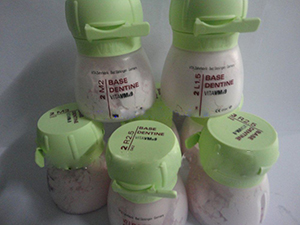DentistryIQ 2014-2015 Submission Guidelines
Thank you for your interest in submitting an article to DentistryIQDN.com. Below please find a list of guidelines, contact information, and answers to frequently asked questions.
Topic Suggestions:
We publish a wide range of articles and are happy to work with you to select a topic. (See contact info on pg. 3). Above all, we encourage you to write on a topic that best suits an area of your expertise.
How To Submit An Article:
Email your article in a Word document (or similar) to Senior Editor Zachary Kulsrud and the section editor corresponding to your topic. (See addresses and list of editors on pg. 3).
Article Formatting:
Please follow the formatting guidelines below. Articles that are not in this format will be considered incomplete and may be delayed indefinitely for review.
- Arial font
- 12 point type
- 1” margins
- One space after periods
- Double spaced
- At the top of the article include author name(s) with credentials (DMD, DDS, etc.)
- At the top of the article, include your email address and phone number
- Include your bio at the end of the article (details below)
- See example at end of this document
Author Bio and Photo:
Along with your article, please submit a short bio (100 words or fewer) along with a high-resolution, professional headshot. These will be included at the end of your article.
Article Length (Word Count):
Because your article will be published digitally, there is no limit on word count. However, we do have recommendations based on our observations:
- Think of your article as a story. Tell your story in as many words as you need to best inform, entertain, and educate the reader.
- Shorter articles (under 700 words) tend to do better online, although there are plenty of exceptions to this rule.
- Articles that explore more complex topics tend to run 1400-3000 words.
- Articles that describe a photo series are very successful. These tend to be clinical in nature and focus on descriptions of photos.
- As a rule of thumb, keep things focused and condensed. Rambling articles do not hold digital readers for very long.
- We will work with you to “tighten up” the article if need be.
Photos, Figures, and Artwork:
We encourage you to submit photos, figures, and/or artwork with your articles. Articles containing one of these items tend to fare better online. Submit high-resolution photos when possible. If files are too large to email (over 10 MB), please set up a dropbox for file transfer. (e.g., dropbox.com).
Photo Releases:
Authors are responsible for collecting any applicable photo releases. These do not need to be submitted with your article.
Product mentions:
Products or websites can be mentioned if tastefully done. This is especially true if it helps the reader understand how to use a particular product in a procedure or case study. We do not publish promotional or overtly advertorial material.
References:
All articles should contain references where appropriate. References will be published.
Signed Copyright Agreement:
We cannot publish any articles until you have completed the attached copyright agreement. Please note that PennWell, Inc., assumes copyright of all published material. The copyright may be released with permission of an appropriate representative from PennWell, Inc. Articles appearing on DentistryIQ.com may not be reprinted in other publications without the express written consent from a PennWell, Inc., representative.
Deadline for Submission:
If you are interested in being published in an upcoming issue of a newsletter, please contact the appropriate section editor for a schedule of deadlines.
Approval Process:
The editors of DentistryIQ.com work with a team of dental professionals in deciding whether your article will be published. You should be notified within 1 month of submitting your article about its status (accepted/declined), although it is common practice to be notified sooner than this. If your article is accepted, it will be published within one month of approval or on the date determined by the section editor.
Where Will My Article Be Published?
Your article will be published on DentistryIQ.com. We frequently “push” articles out via social media and newsletters.
Additional Publication Opportunities
The DentistryIQ.com Network includes DentistryIQ.com, Dental Economics, RDH Magazine, Surgical-Restorative Resource, and Apex360. Many DentistryIQ authors have gone on to write successfully for our other publications. So, if you are interested in furthering your career through publication, you are certainly in the right place!
SAMPLE ARTICLE SUBMISSION
Two Game-Changers For Your Practice
By Anthony Feck, DMD
Zig Ziglar said, “You will get all you want in life if you help enough other people get what they want.” What Zig said about life in general is crucial to success in business. Dentistry is no different in this regard. Start by finding out what your customers want, then discover how to give it to them. While this may seem painfully obvious, it is commonly overlooked when it comes to strategic business planning. This is the theme of the timeless, best-selling business book by Spencer Johnson titled, Who Moved My Cheese1, in which the “Cheese” is what the marketplace wants – and it is constantly changing. According to Johnson’s business fable, if we don’t change with the marketplace, we get left behind.
My role as a dentist, consultant2, and educator gives me a unique perspective on when and where the cheese is moving, as well as how some very successful dentists are capitalizing on the opportunities that accompany these moves. What follows are four of these game-changers:
Game-Changer #1 – Short-Term Cosmetic Braces for the Adult Patient
One thing isn’t changing – People want an attractive smile. But they are increasingly reluctant to seek out invasive methods to accomplish this. The dentists I talk to on a regular basis remark about performing fewer porcelain veneers than they used to. Adult patients want cosmetic solutions that conserve tooth structure. They also want that solution to be fast, cosmetically appealing during treatment (no metal showing), and of course, less expensive.
These objectives were the impetus for the development of the general dentist oriented cosmetic braces system, Six Month Smiles3. This system uses clear brackets, and tooth-colored wires with shape memory to straighten teeth in about six months. Bracket position, critical to any straight-wire system, is provided by Six Month Smiles bracket specialists through means of a bracket-bonding tray that allows for bonding of all the brackets on an arch at the same time. These trays are included in a Patient Tray Kit along with all the necessary supplies to start a case. Because much of this short-term orthodontic treatment can be delegated, the potential for increased productivity is significant. The system also comes with comprehensive support including a robust forum supported by an experienced network of Six Month Smiles providers.
Game-Changer #2 – Practical Implant Placement for the General Dentist
The demand for implants has never been greater. Dentists and patients alike have long appreciated the benefits of implants to other forms of tooth replacement, and even endodontic treatment in many cases. Today’s additional demand is being fuelled by age and economic demographic shifts, the aforementioned minimal invasive paradigm, as well as implant systems such as OsteoReady4 that allow general dentists to place implants less invasively, more efficiently, more prosthetic friendly, and more affordably. Now more than ever before, patients can have implants placed, and receive the prosthetic solution, from the same professional – their general dentist, often in four months or less.
In addition, the OsteoReady system is flexible enough to allow the general dentist to place conventional dental implants without surgical flaps or grafting. OsteoReady has a small diameter implant for thin ridges, short-wide implants for minimal ridge height such as often encountered in the posterior maxilla, a technique for immediate implant placement following an atraumatic extraction, a one-drill technique utilizing a multi-drill that can replace multiple step-dills, and a system for placing abutments and impressing for crowns and bridges at the same time the implant is placed. General dentists placing 80% of all implants is the new cheese.
Conclusion
Opportunities abound in a constantly evolving dental marketplace. Recognizing these shifts in consumer demand is essential to achieving and maintaining a prosperous business and a productive practice. The marketplace changes discussed here involve advanced methods of dealing with dental anxiety, minimally invasive approaches to cosmetic and implant dentistry, systems to provide these services more efficiently, and technological advances for achieving these objectives. Four opportunities were presented here that can allow the practice to maximize productivity and enhance patient care.











